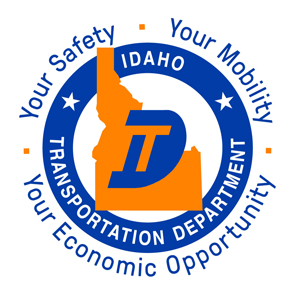
Drones, I-11, travel highlight board’s January meeting
![]()
Aeronautics accomplishments, proliferation of drones, an I-11 corridor were discussed, and out-of-state travel rules were updated at the Idaho Transportation Board’s January 17 meeting.
Aeronautics Advisory Board
The board had an informal luncheon with the Aeronautics Advisory Board as part of its January 17 meeting in Boise, and then heard from the Aero Board and Division of Aeronautics during the business meeting.
The use of drones is continuing to escalate. There were around 1.1 million drones in the United States as of December 31, 2017. The Federal Aviation Administration estimates that the number of drones will double this year, up to 2.4 million. There are 585 drones registered in the Boise zip codes. As ITD’s use of drones increases for activities such as land surveying, bridge inspection, and emergency response and preparedness, the Division of Aeronautics is proposing to take the lead on the use and oversight of them.
Staff oversaw a $1 million airport aid program, updated the state airport system plan, and maintained the state’s 31 airstrips. The flight time of the King Air increased from 205.7 hours in FY17 to 228.3 hours in FY18. There were 27 aviation crashes in Idaho in 2017 and 2 fatalities. In 2016, there were 23 accidents and 2 fatalities. The Division purchased a new plane, a Kodiak, which will be instrumental in search-and-rescue operations, natural-disaster reconnaissance, transporting state personnel, supporting ITD continuity of operations plan, maintaining the state’s backcountry airfields, and other missions critical to the state.
Dealer Advisory Board
The Dealer Advisory Board (DAB) also presented its annual report at the meeting. The DAB worked with staff on the new state-of-the-art system for the titling process as part of the modernization project. This will eliminate the manual process of issuing titles.
Some accomplishments include a new online tool for title applications, stronger relationships with the counties, quality assurance/quality control enhancements in the title filing process, and motor vehicle investigators more focused on dealer enforcement. The DAB will continue working with ITD on implementing an electronic process for titles, procuring new software to identify unlicensed dealers, and improving curriculum for continuing education.
Delegations
A delegation from Humboldt County in Nevada met with the board on a proposed Interstate 11 corridor. The intent is to establish a new major north-south route from Mexico to Canada between I-15 and I-5, which is at or exceeding capacity.
Humboldt County officials elaborated on the benefits of using US-95. Nevada’s intent was to connect Las Vegas and Reno. With the growth the Treasure Valley is experiencing, they believe it is important to connect it via an I-11 route. The US-95 corridor is more centrally located between I-15 and I-5 and has seen significant growth in vehicle miles traveled, especially in the last three years.
The board also heard from the Idaho Public Utilities Commission (PUC) on issues related to fiber optics and transportation. The issue goes back to the late 1880s and invention of the telephone, and the need to connect cities and communities with telephone wires. Overall, Idaho’s regulations have not kept up as technology has evolved; although its hands are somewhat tied due to the Federal Communications Commission’s broad authority. 5G, the next generation of wireless technology, requires an attachment to poles lower to the ground at approximately ¼-mile intervals. These boxes will need a power source and fiber optic and every provider will need its own box.
State statute requires ITD to allow public utilities to use its right-of-way; however, the definition of a public utility is broad. It was noted that it is important for ITD to work cooperatively with the PUC and other state agencies on this important issue.
Policy Updates
The board approved revisions to Board Policy 4052 “Official Travel by Department Personnel” and concurred with the corresponding changes to the Administrative Policy. The changes clarify when travel is considered in-state versus out-of-state. Previously, final destinations within 60 miles from the Idaho border constituted in-state travel. Now, all business travel to a final destination outside of Idaho will be classified as out-of-state travel. The policy changes are consistent with the State Board of Examiners’ State Travel Policy.
All policies can be found on Share Point under Policy Finder: http://itdportal/sites/Admin/BSM3/PolicyFinder/default.aspx
Published 01-25-19